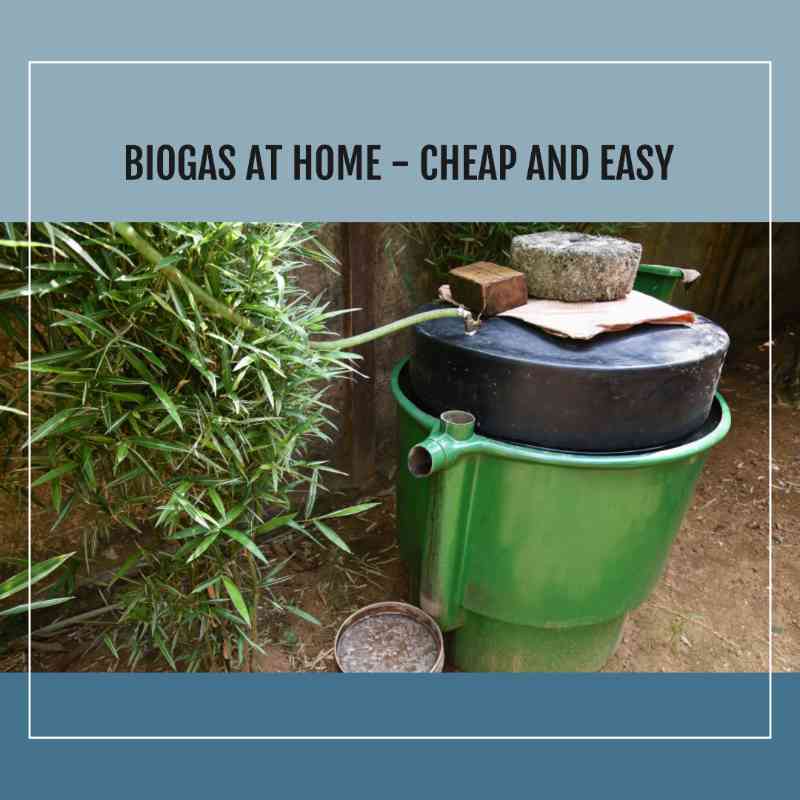Biogas At Home – Cheap and Easy

Make sure to like Living Green and Frugally on Facebook, Shop at Amazon to help support my site and explore our PINTEREST BOARDS for innovative ways you can become self-sufficient.
In a world that’s increasingly conscious of environmental sustainability, harnessing renewable energy sources and adopting eco-friendly practices has become imperative. Among the many eco-friendly solutions available, the implementation of biogas systems at home stands out as an innovative and beneficial approach. Not only does it provide a renewable source of energy, but it also offers a natural, nutrient-rich byproduct that can revolutionize home gardening – all from household waste.
A biogas system is a closed-loop setup designed to convert organic waste into two valuable end products: methane gas and nutrient-rich slurry. These end products not only benefit the household but also contribute positively to the environment.
The End Products:
1) Methane: This gas, primarily composed of methane, is the primary output of a biogas system. It is a combustible fuel that can be utilized for various household energy needs. Methane burns cleaner than other fossil fuels, emitting significantly fewer pollutants, making it an environmentally friendly alternative.
2) Slurry: The byproduct of the biogas production process, slurry, is a nutrient-rich organic fertilizer. This substance is an excellent soil conditioner and fertilizer, enhancing soil fertility and promoting healthier plant growth. The spent slurry, once removed from the system, serves as an organic and sustainable alternative to chemical-based fertilizers.
Main Components of a Biogas System:
1) Inlet Pipe: The system begins with an inlet pipe that directs organic waste into the digester tank. This waste can include kitchen scraps, animal manure, agricultural residues, or any organic material suitable for decomposition.
2) Digester Tank: This is the core component of the biogas system where anaerobic digestion takes place. The tank provides an oxygen-free environment where bacteria break down organic matter, producing methane gas and slurry as byproducts.
3) Gas Holder Tank: The methane gas produced during the digestion process accumulates in this tank, where it’s stored for later use. This tank usually features a floating dome or a similar mechanism to contain the gas under pressure.
4) Slurry Outlet Pipe: As the organic matter decomposes, the resulting slurry settles at the bottom of the digester tank. An outlet pipe allows for the removal of this nutrient-rich slurry, which can be used as an organic fertilizer.
5) Gas Outlet Pipe: Once the methane gas accumulates in the gas holder tank, it can be extracted through a gas outlet pipe connected to the household appliances or a stove for direct use.
Implementing a biogas system at home offers numerous advantages. It not only provides a renewable energy source but also reduces household waste, mitigates greenhouse gas emissions, and yields a valuable fertilizer for gardening. Additionally, it promotes self-sufficiency by decreasing dependency on traditional energy sources.
By utilizing household organic waste to produce energy and nutrient-rich fertilizer, biogas systems offer a sustainable and eco-friendly solution for both energy production and agricultural enhancement right at our doorstep. Embracing this technology not only benefits individual households but also contributes positively to a greener and more sustainable future for our planet.